Conservatory plants: 13 sun-loving options for garden rooms
Create a leafy indoor paradise with conservatory plants that can cope with bright light and heat in summer and colder conditions in winter

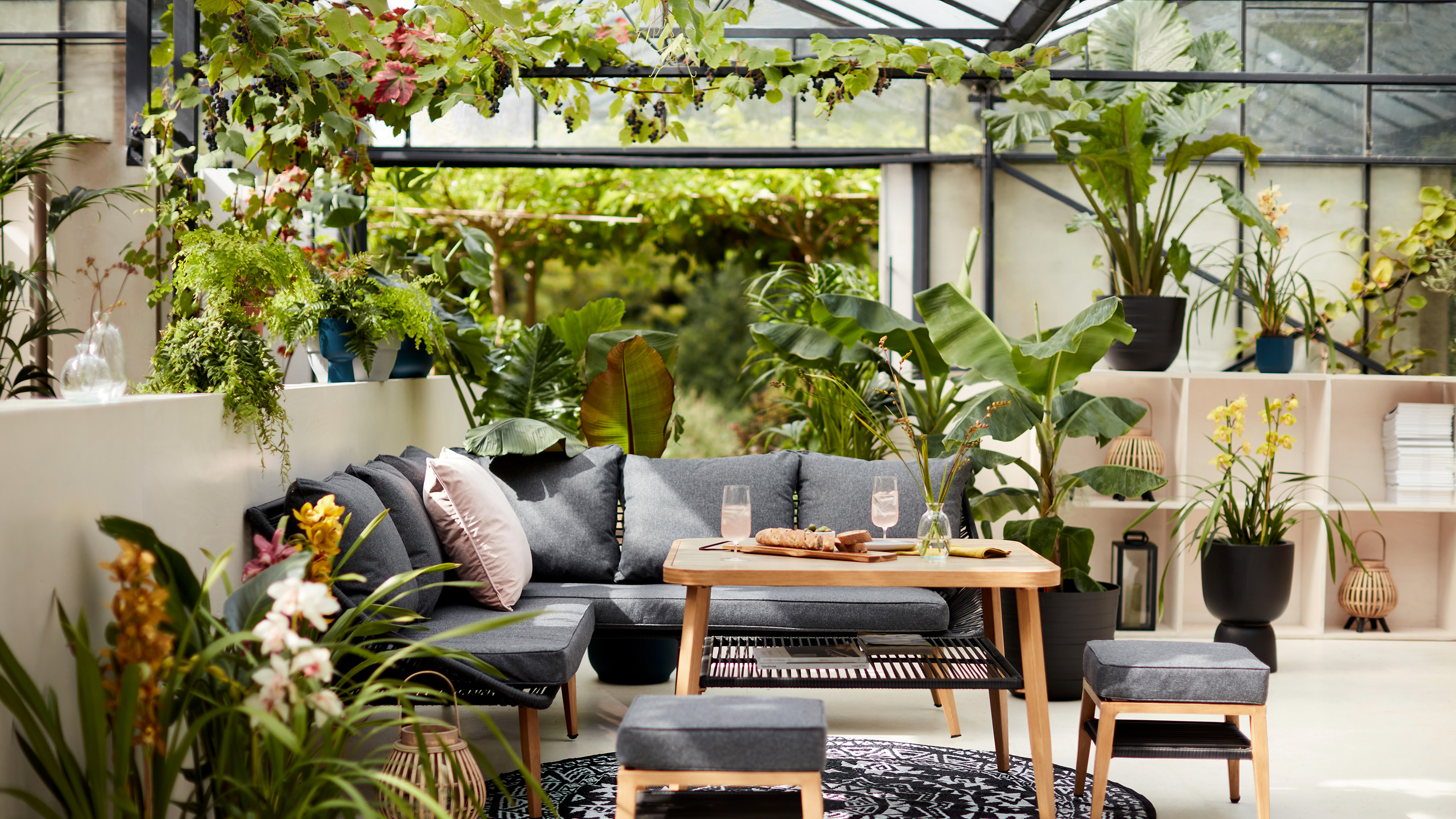
Conservatory plants offer the perfect way to bring a lush, leafy look to conservatories and garden rooms. Where the bright light and warmth from spring to early fall provide an ideal home for many sun-loving species.
But choosing plants for a conservatory isn't as simple as picking any old houseplant. They need to be tough plants that will cope with the conditions in a glass-roofed room where strong sunlight may raise summer temperatures to over 86˚F (30˚C). Meanwhile a lack of insulation means that conservatories are colder than the rest of the house in winter.
Not only that but conservatories can experience marked differences between day and night-time temperatures, but the good news is that many houseplants are adapted to these variations and will be able to sail through the seasons unscathed.
When choosing conservatory plants, also check the type of glazing used before you buy. Neutral glass with high light-transmittance allows the full spectrum of light through, offering the right conditions for the best indoor plants that like bright sun. Tinted and solar-controlled glass both help to lower temperatures in summer, but they will also reduce the level of UV rays passing through, creating conditions more suited to plants that prefer light shade.
Introduce greenery to a garden room with the best conservatory plants
The solution to ensuring you choose the best conservatory plants is to assess the light and temperatures your room experiences throughout the year, and experiment with a few plants to see which suit it best.
Whether you go for low light indoor plants for spaces with solar-control glass or ones that will thrive in the summer heat of a garden room, the following list has plenty of great options which will help you to create stunning indoor garden ideas in your conservatory.
1. Pincushion cactus (Mammillaria)
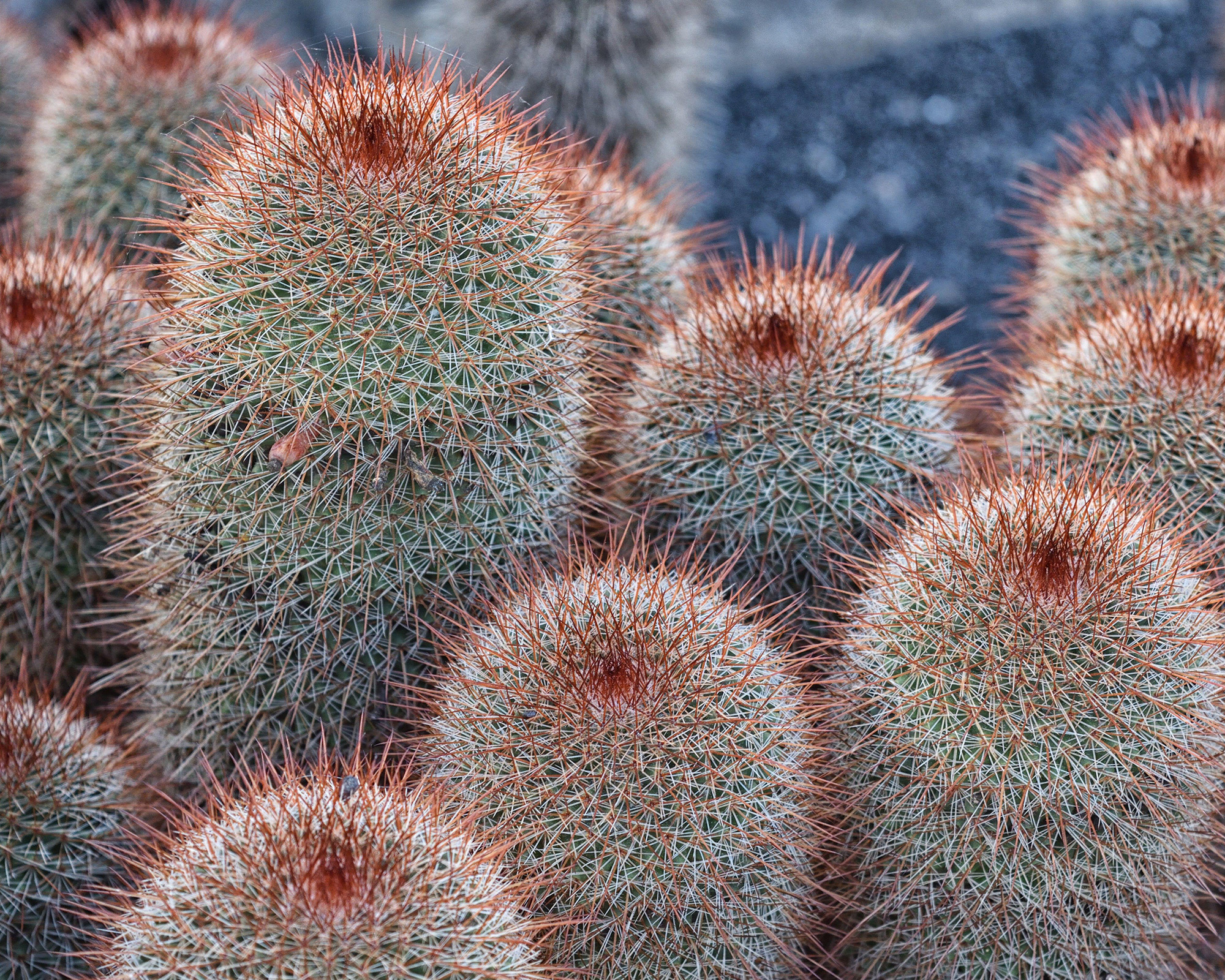
The tough but versatile pincushion cacti come in many shapes and sizes, but all feature decorative spines and enjoy life in a heated or unheated conservatory, tolerating temperatures down to 41˚F (5˚C) in winter.
Many are small and domed shaped, such as Mammilalaria spinosissima with its rusty red, bristly spines, or columnar shaped such as the aptly named ladyfinger cactus, M. elongata, which produces clusters of slim spiny stems. Small flowers also appear in rings around the top of the stems.
Using cactus garden ideas for your conservatory plants is a good option as they will enjoy the bright light, but need some shading in summer to prevent the full blare of the sun from scorching them. Plant in a pot with drainage holes at the base and water from spring to autumn, allowing the top 1/2in (1cm) of compost to dry out between each watering.
Always leave your plant to drain before returning it to a waterproof container. Do not water at all in winter, but mist lightly once every or three or four weeks. Apply a half-strength cactus fertilizer once a month from spring to fall.
2. Aloe vera
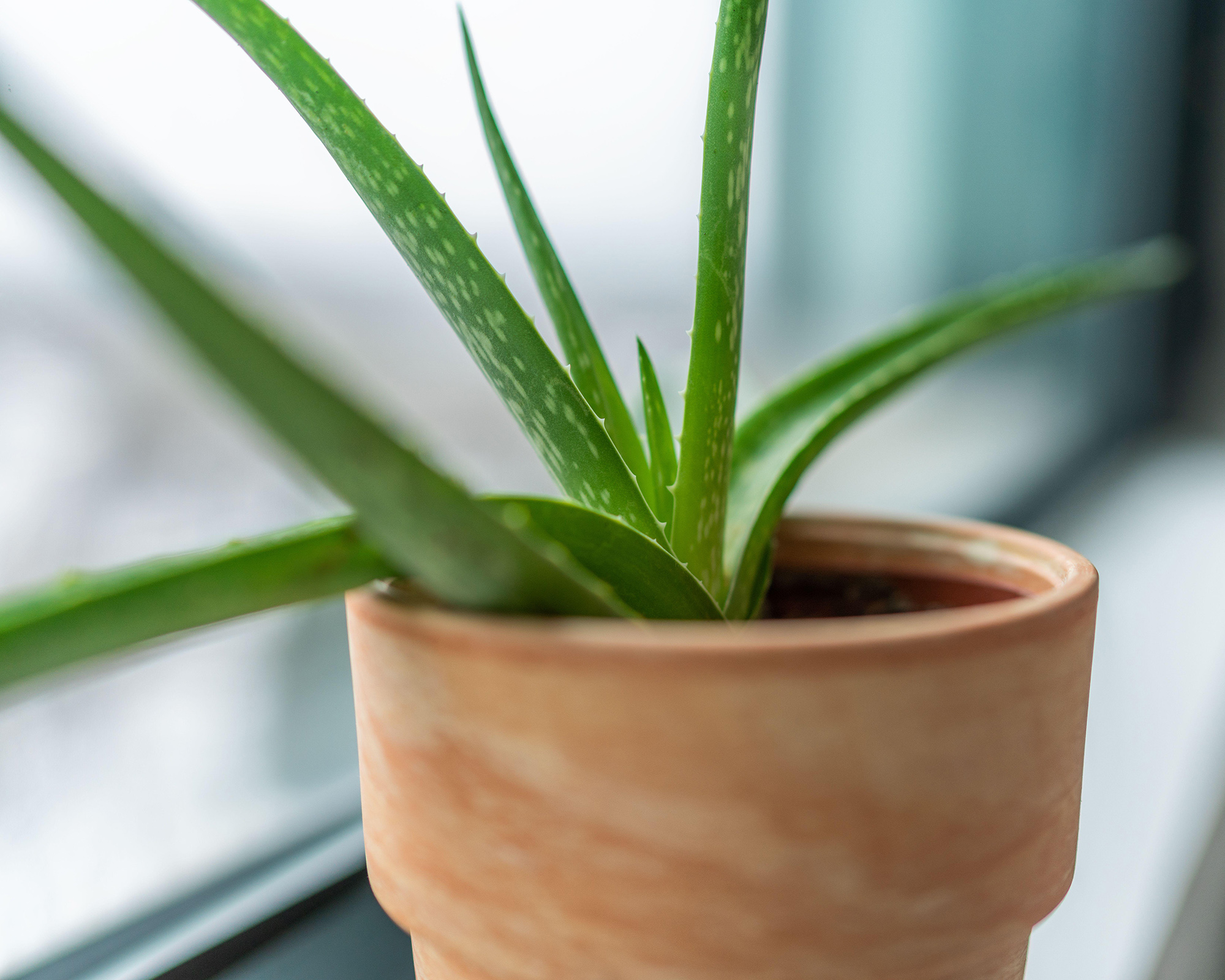
Popular for its rosettes of smooth leaves with soft spiny edges, the gel inside aloe vera’s foliage also helps to soothe burns, including sunburn, making it an invaluable plant for your home.
Although often thought of as a kitchen plant, you'll find that aloe vera will actually do well in a warm, sunny conservatory. This tough succulent requires some shade in summer, but it will also tolerate low winter temperatures in winter. A mature plant can grow to about 2ft (60cm) in height and spread, so give it room to shine.
Water only when the top of the compost feels dry and reduce this even further in winter, giving just a little about once a month to ensure the leaves don’t shrivel. Apply a half-strength cactus fertilizer monthly from spring to late summer.
3. Bougainvillea
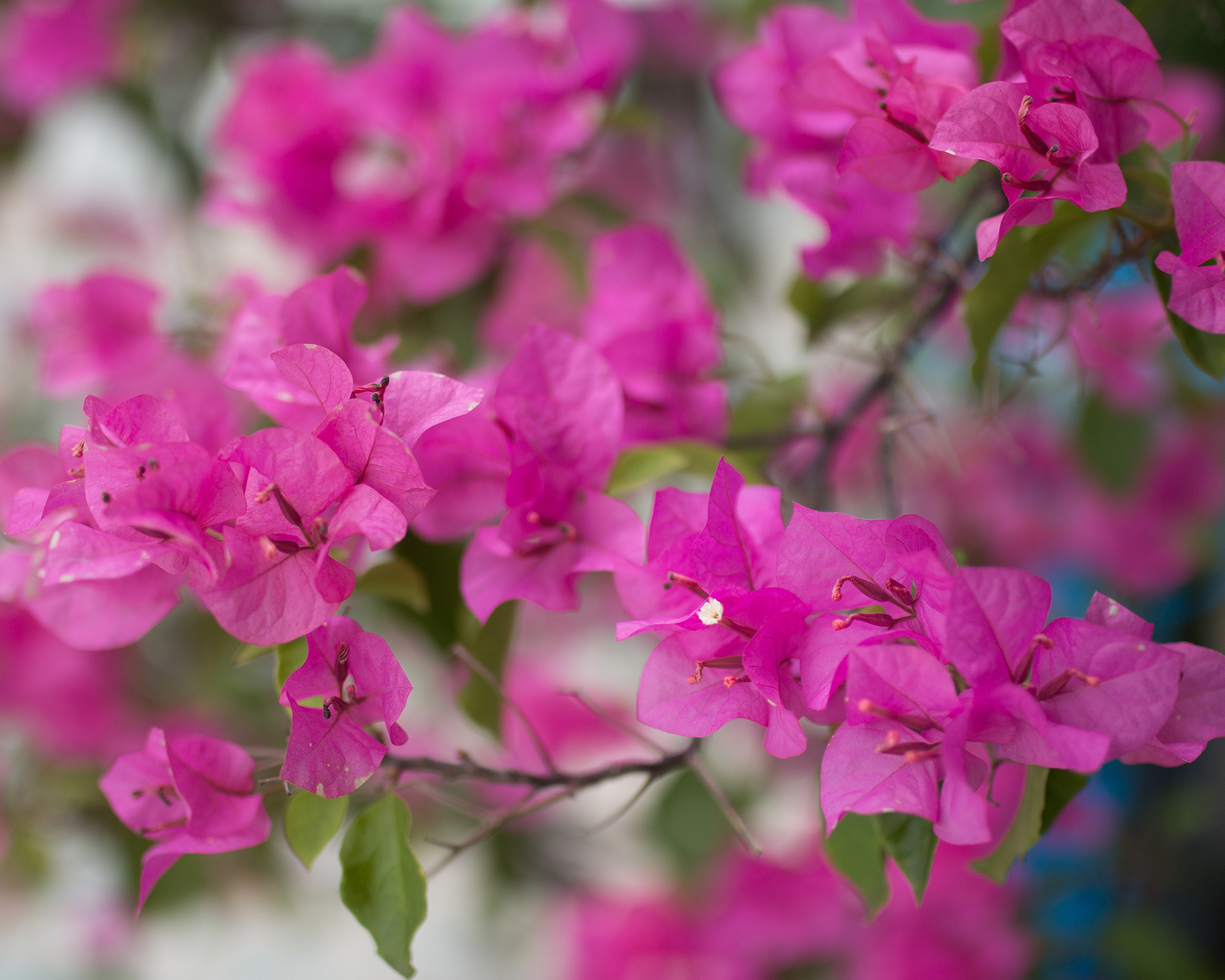
Recreate a classic Mediterranean garden idea inside your home with a bougainvillea trained along wires fixed to your conservatory wall, where the tall, twining stems will produce a flowery indoor garden throughout summer.
Choose a dwarf variety such as ‘Helen Johnson’ or ‘Pixie’ for a small conservatory and train the stems up canes or over a wire hoop. The tiny white flowers nestle inside colorful papery bracts, which come in shades of pink, red or white.
Plant in a large pot with drainage holes at the base and set in a waterproof container or on a saucer. From spring to fall, water well when the top of the compost feels dry and reduce watering to once every few weeks in winter. Feed with balanced liquid fertilizer once a fortnight from spring to late summer, but switch to a high potash fertilizer such as a tomato feed on every third application.
Also provide some shade in the height of summer and open the doors to prevent the plant overheating. Prune back the stems after they have flowered to encourage more blooms and don’t worry if the leaves fall in winter – they will return again the following spring.
4. Jade Plant (Crassula ovata)
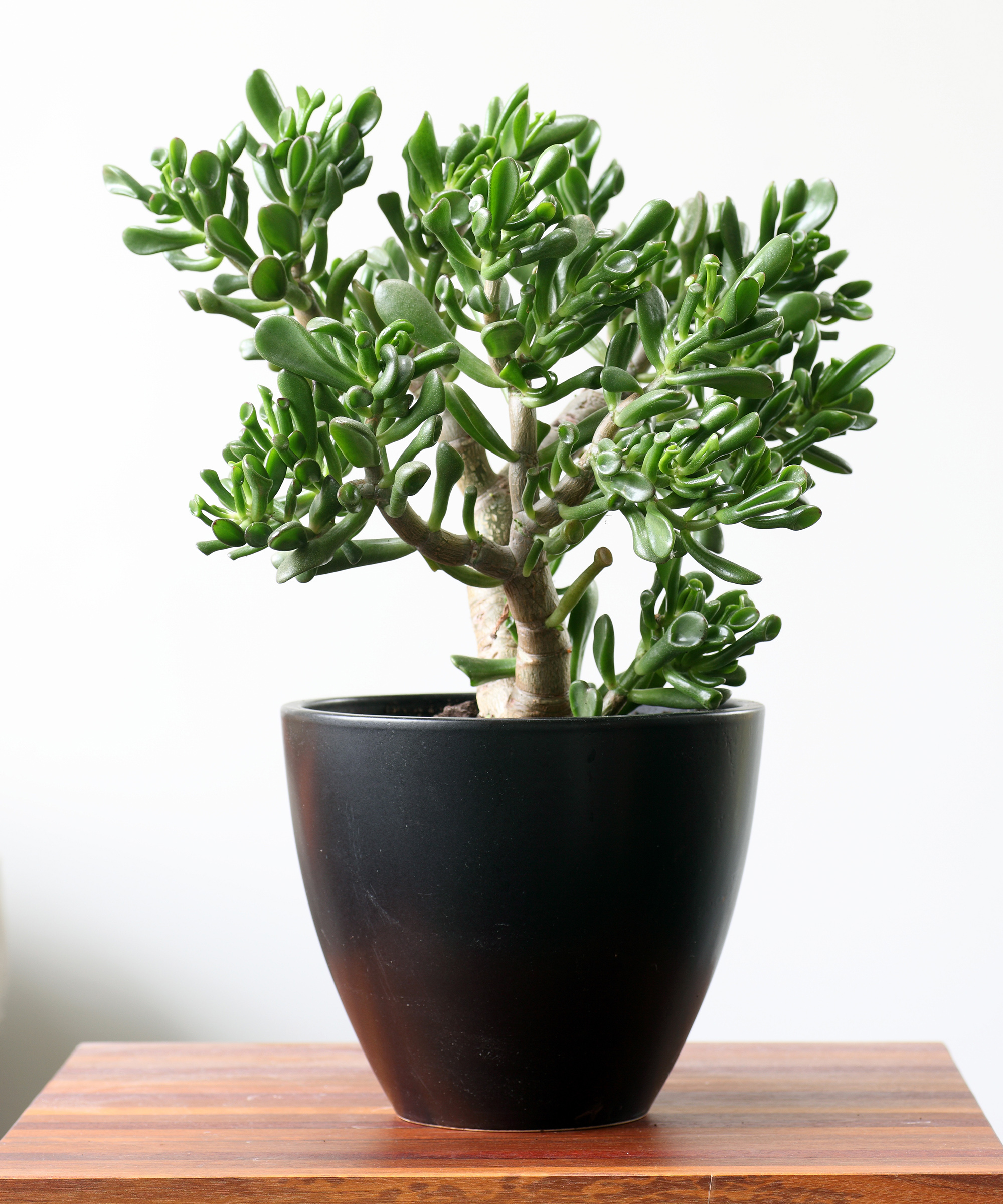
Almost bullet-proof, this tough succulent is a good choice for beginners looking to decorate a conservatory with foliage as well as for a succulent garden idea outside. Also known as the money plant, as it’s said to bring good fortune, it forms a tree-like structure, with woody stems and fleshy oval leaves that retain moisture, allowing it to withstand long periods of drought.
Part of how to care for succulents is knowing to water it when the top of the compost feels dry. Keep the compost drier in winter, watering only occasionally to prevent the leaves from shrivelling. Take care not to overwater by ensuring it’s in a pot with drainage holes at the base and checking that there is no water at the bottom of its waterproof container. Apply a half-strength balanced liquid fertilizer about once every six weeks from spring to early fall.
5. Wax plant (Hoya)
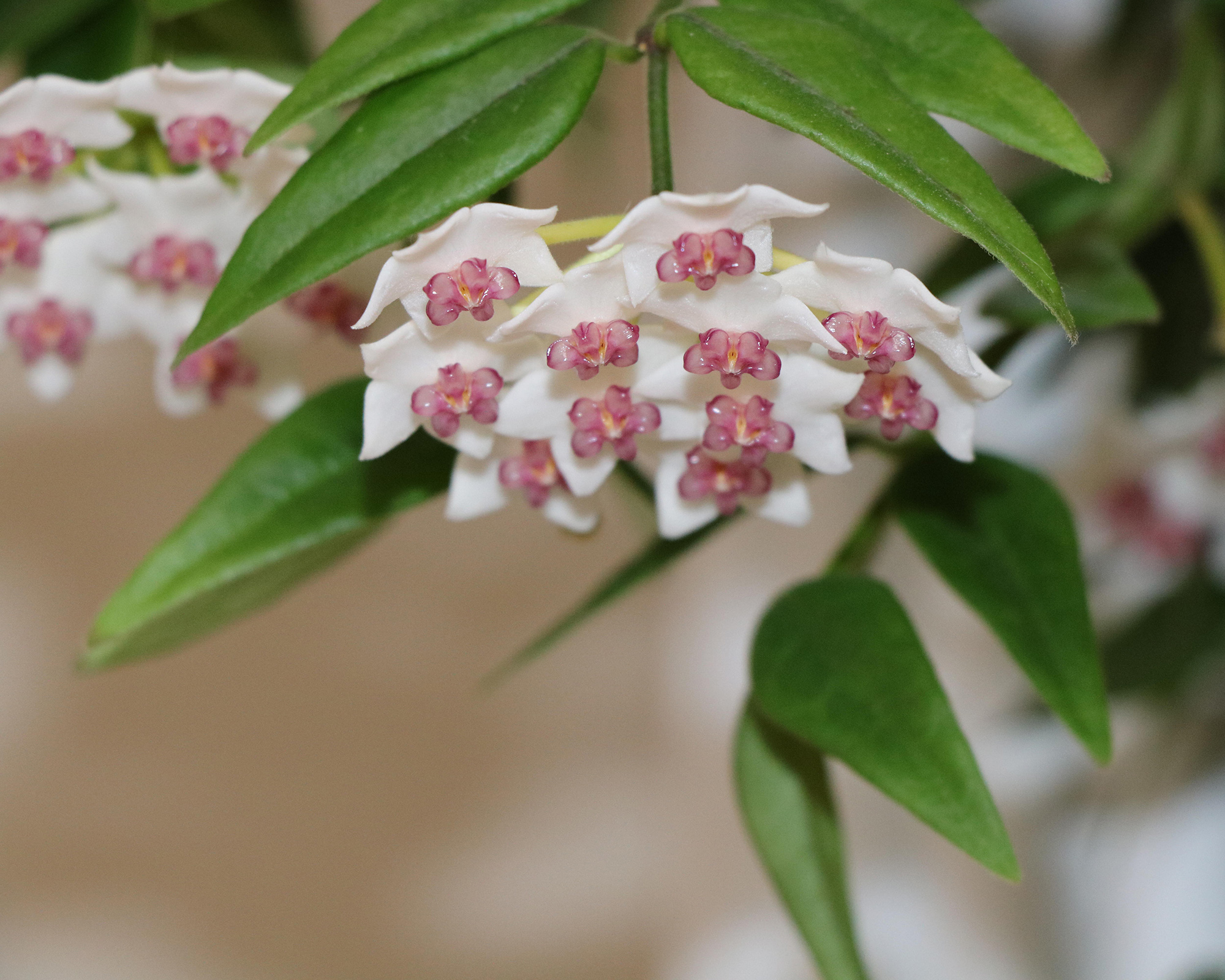
The sweetly scented white waxy flowers of a hoya will fill your conservatory with fragrance when they appear in summer. These large climbing plants can be used to decorate a wall, where their leafy stems will coil around wires or trellis, or choose Hoya lanceolata subsp. bella for a smaller room and train the stems on a large hoop.
Plant your hoya in a large garden planter with drainage holes at the base and set in a waterproof container or on a saucer. Keep the compost moist from spring to fall, but only water when the top feels dry in winter.
Apply a high potash fertilizer such as a tomato feed at half-strength once every two weeks from spring to early autumn, and mist the plant when it is not in bud or flowering. Plants will also need some shade in summer. Prune overly long stems in fall.
6. Pony tail palm (Beaucarnea recurvata)
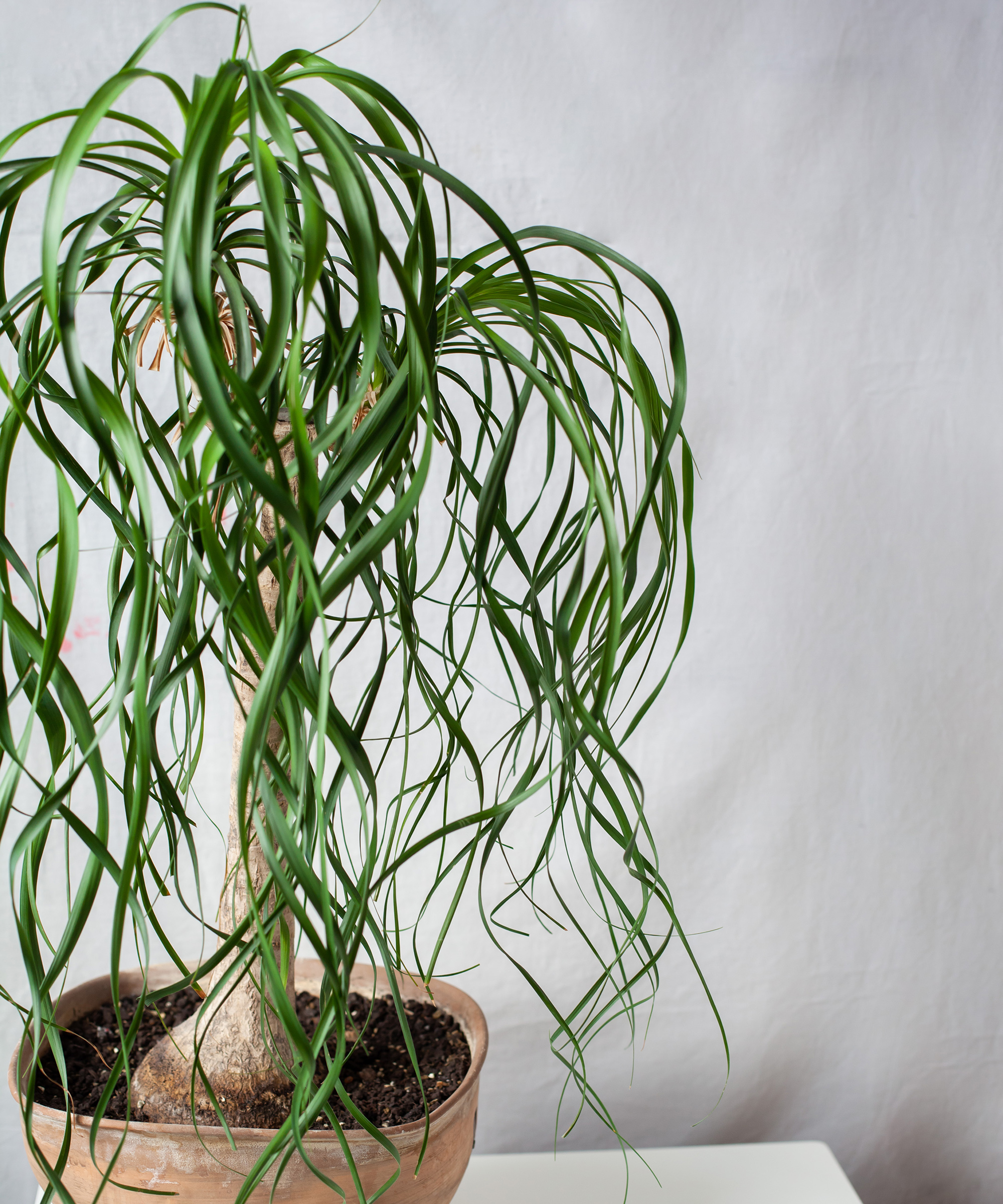
Many tropical plants such as palms like high humidity and some shade, but this leafy plant is actually a member of the yucca family and tolerates full sun and a drier atmosphere, making it ideal for a conservatory.
Its swollen stem and fountain of slim leaves create an eye-catching feature that needs very little care to thrive. Simply water when the top of the compost feels dry, and leave it to almost dry out completely over winter, when it will also be happy in a cool unheated room. Apply a half-strength balanced liquid fertilizer once a month from spring to late summer.
6. Spineless yucca (Yucca elephantipes)
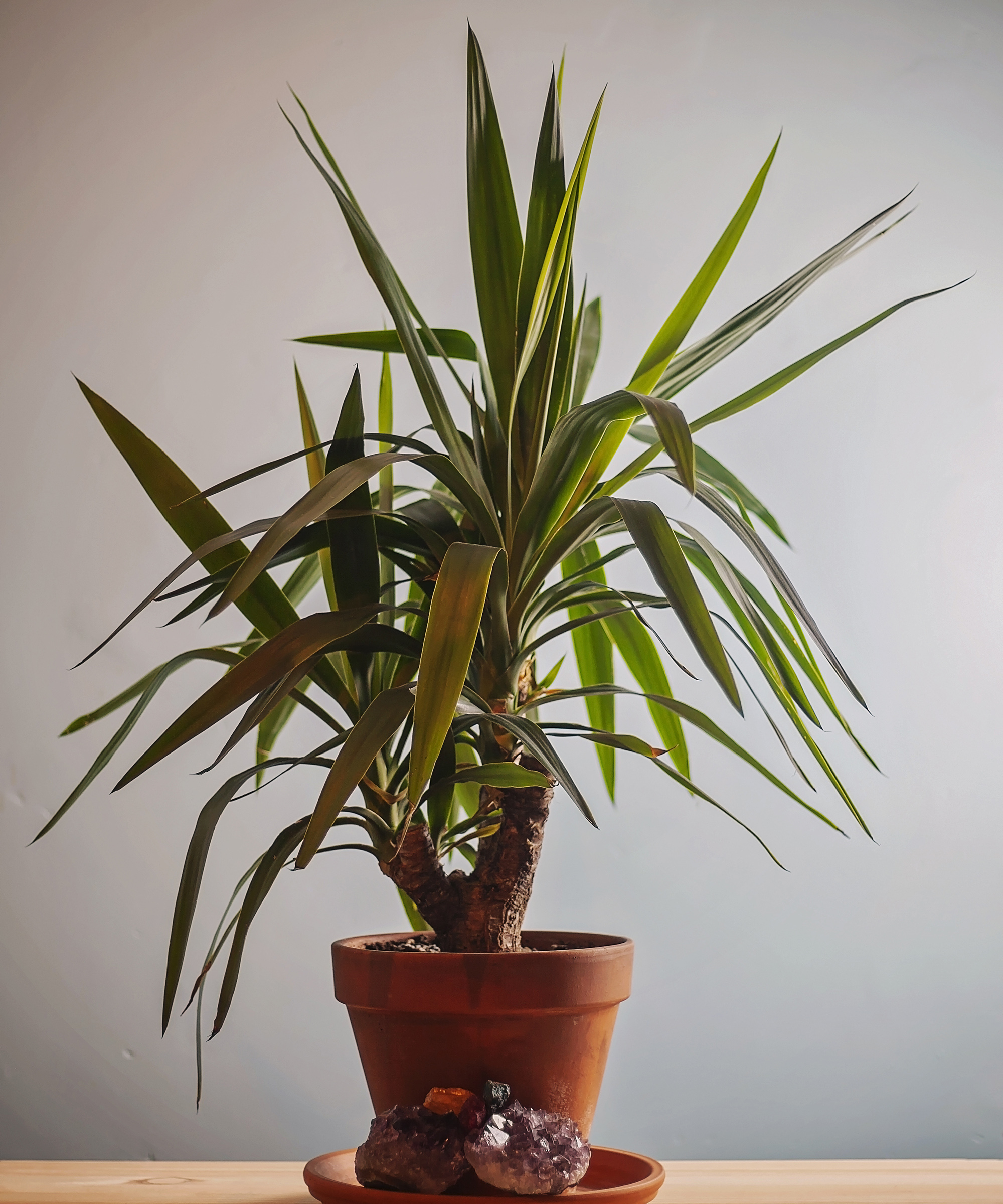
This Mexican beauty will add height and drama to your conservatory plants display, with its tall stems and spiky foliage, which does not have the sharp tips of some hardier yuccas, hence the name. A great plant for beginners, it needs little care – just water when the top of the compost feels dry, and reduce watering in winter so the plant is almost dry.
Thriving on neglect this is a great low maintenance indoor plant, but take care not to overwater it. The leaves may also appreciate a little shading in summer. Apply a half-strength balanced liquid fertilizer once a month from spring to fall.
7. Edible-fruited passionflower (Passiflora edulis)
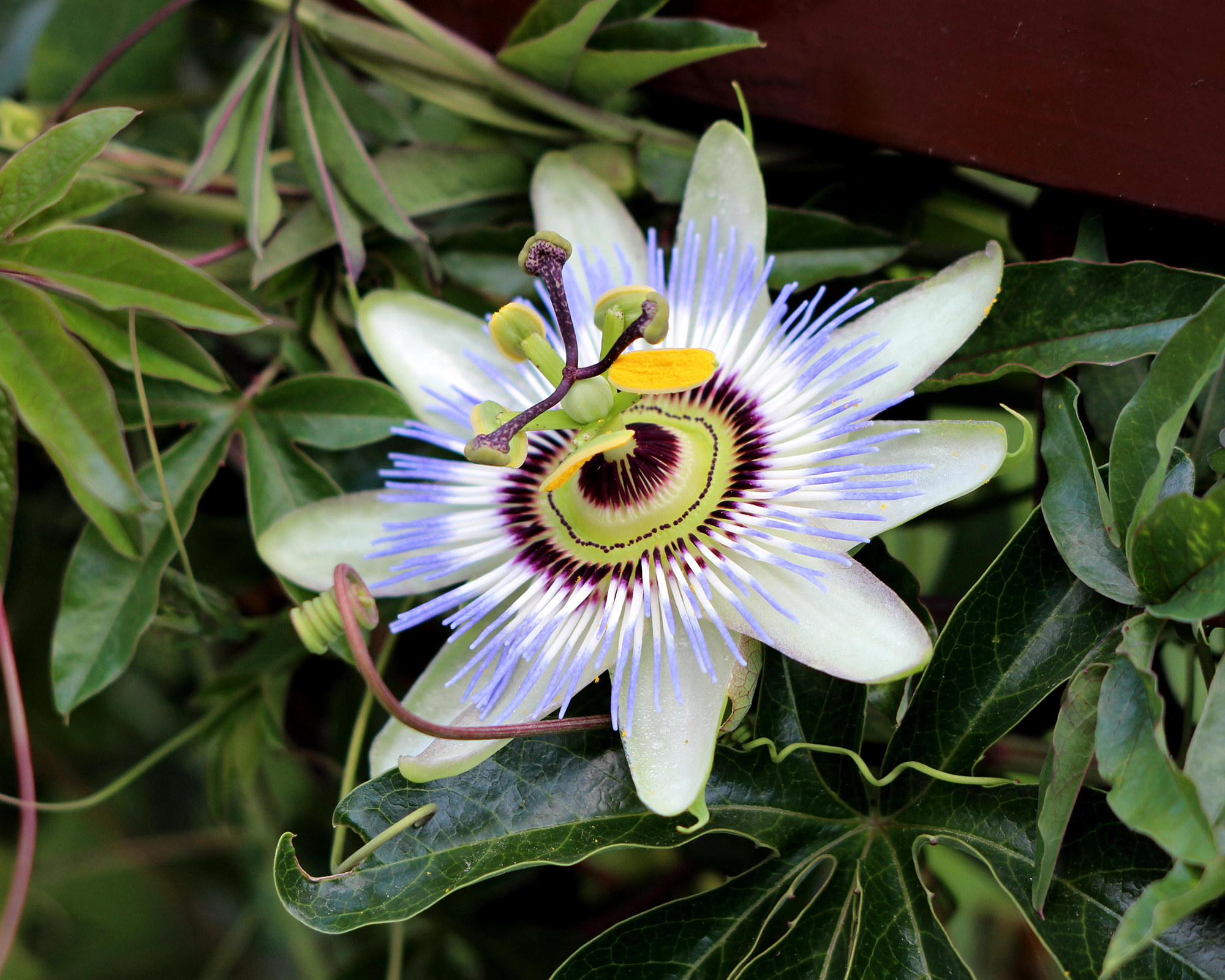
The twining stems of this exotic-looking passionflower are guaranteed to turn heads when the large white and purple flowers appear among glossy green foliage. A bonus are the edible yellow or purple fruits that then form in fall, if you’re prepared to hand-pollinate the blooms. To do this, lightly dab the central three pistils with pollen from the anthers surrounding them, using a small, clean paintbrush or cotton bud.
Ideal for a large conservatory, this pretty passionflower will cover wires fixed to a wall or glazing. Plant it in a large pot with drainage holes in the base, and set it in a waterproof container or on a deep saucer.
Keep the compost moist from spring to fall, and reduce watering in winter, applying only when the top feels dry. Mist plants to raise humidity levels, and feed with a balanced liquid fertilizer once a month from spring to autumn. Provide some shade in summer and prune in spring to keep the stems in check.
8. String of pearls (Senecio rowleyanus)
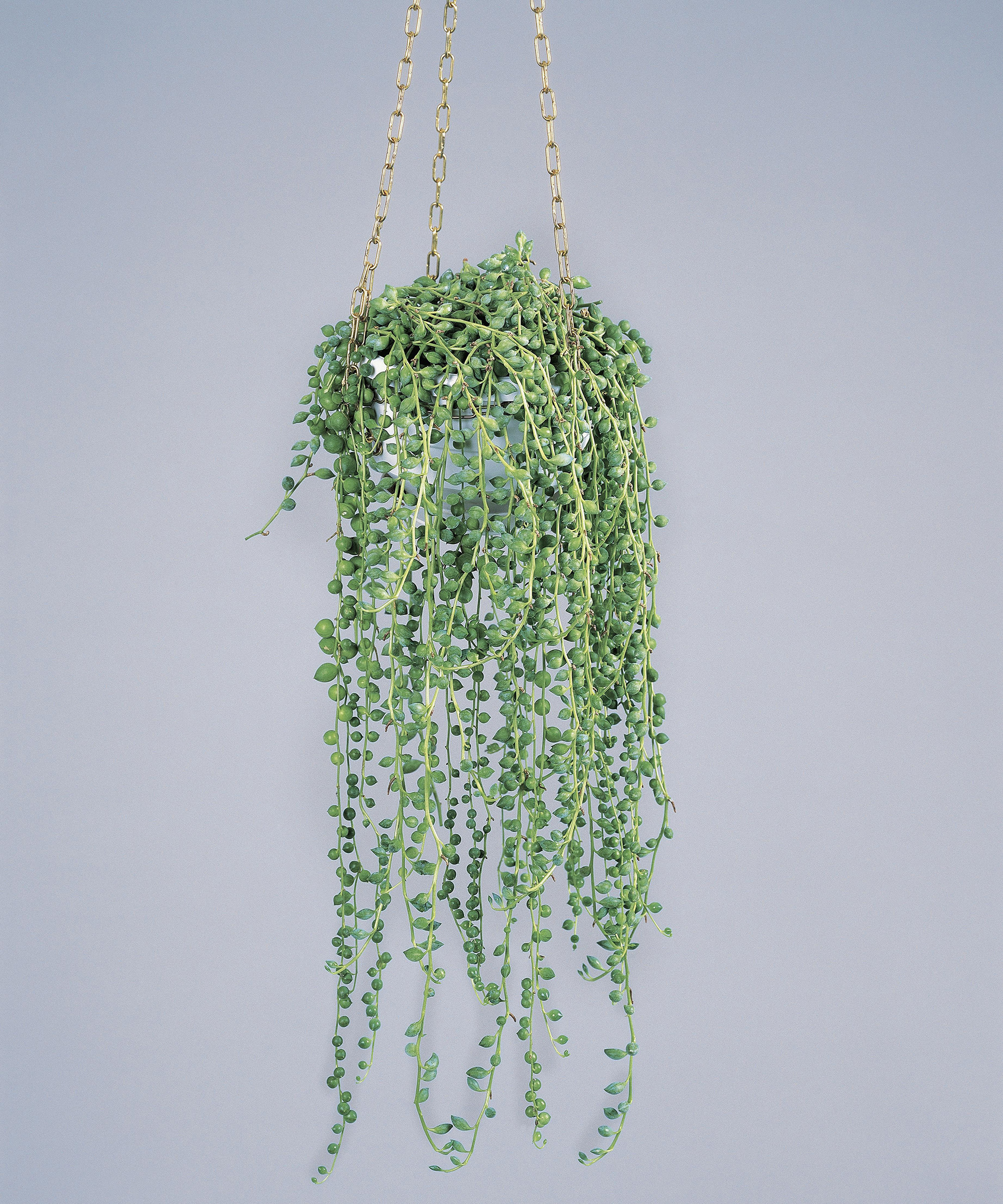
This indoor hanging plant is ideal for a planting in a basket suspended from the ceiling or a pot set on some shelves. An unusual succulent, it will thrive in the sun and warmth of a conservatory, although it will need some shading in summer to retain its color.
It looks like green peas threaded on strings, rather than pearls, with each spherical leaf holding moisture to sustain it through periods of drought. It also produces small white tubular flowers in spring which have a sweet scent.
Water when the top of the compost feels dry; in winter, reduce watering so the soil is almost dry but the leaves are not shrivelled. Take care not to overwater. Apply a half-strength balanced liquid fertilizer about three times from spring to fall.
9. Money tree (Pachira aquatica)
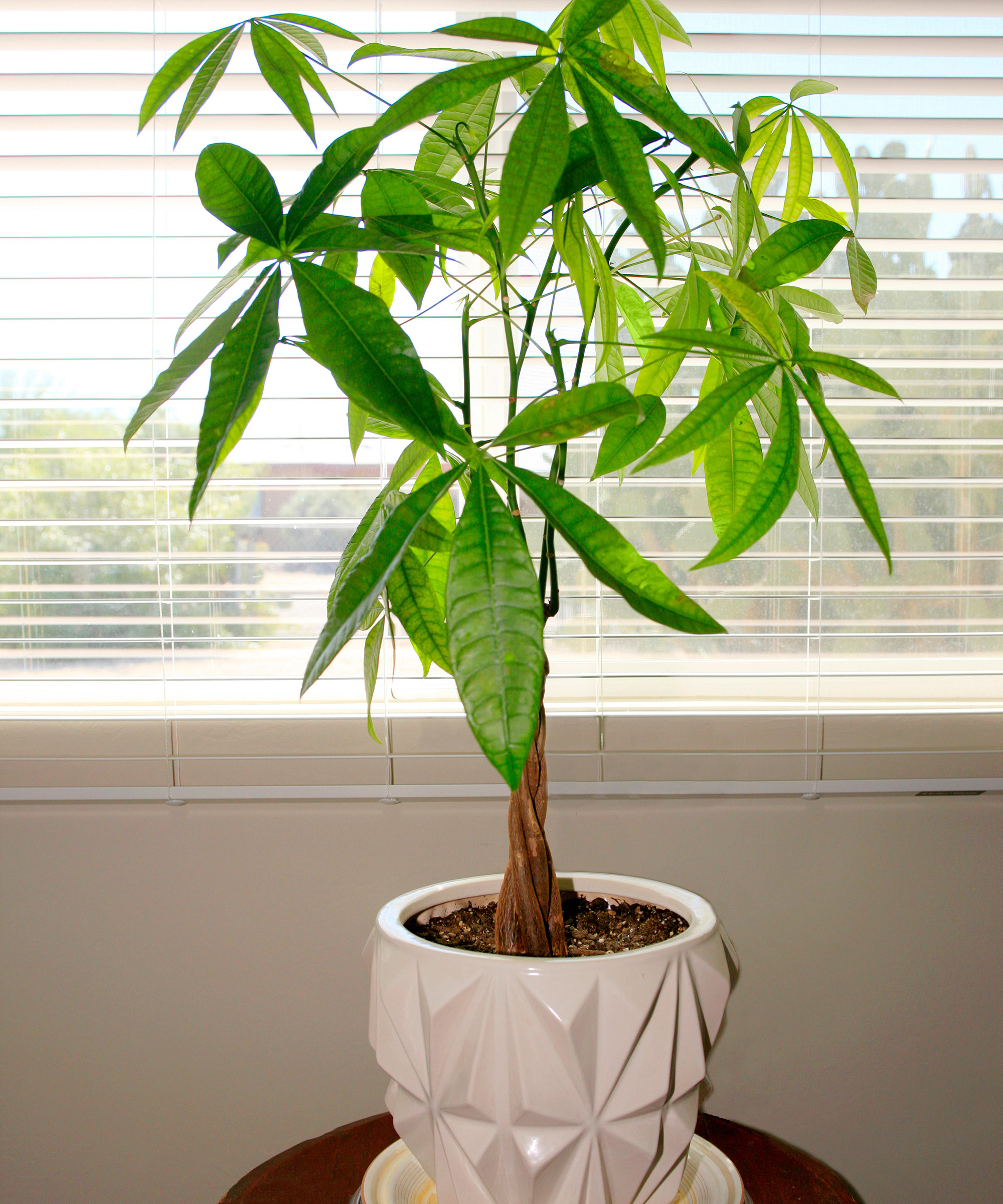
If you’re looking for an easy way to add height and structure to your conservatory plants, the money tree is a good choice. The tall stems, often plaited, hold a neat canopy of glossy green foliage that will enjoy a little shading during the summer months to prevent leaf scorch.
Water when the top of the compost feels dry, reducing this in winter so it’s barely moist. Mist every week from spring to fall or set the plant on a tray of damp pebbles to raise the humidity levels around it. Apply a balanced liquid fertilizer every two or three weeks from spring to early fall.
10. Rose of China (Hibiscus rosa-sinensis)
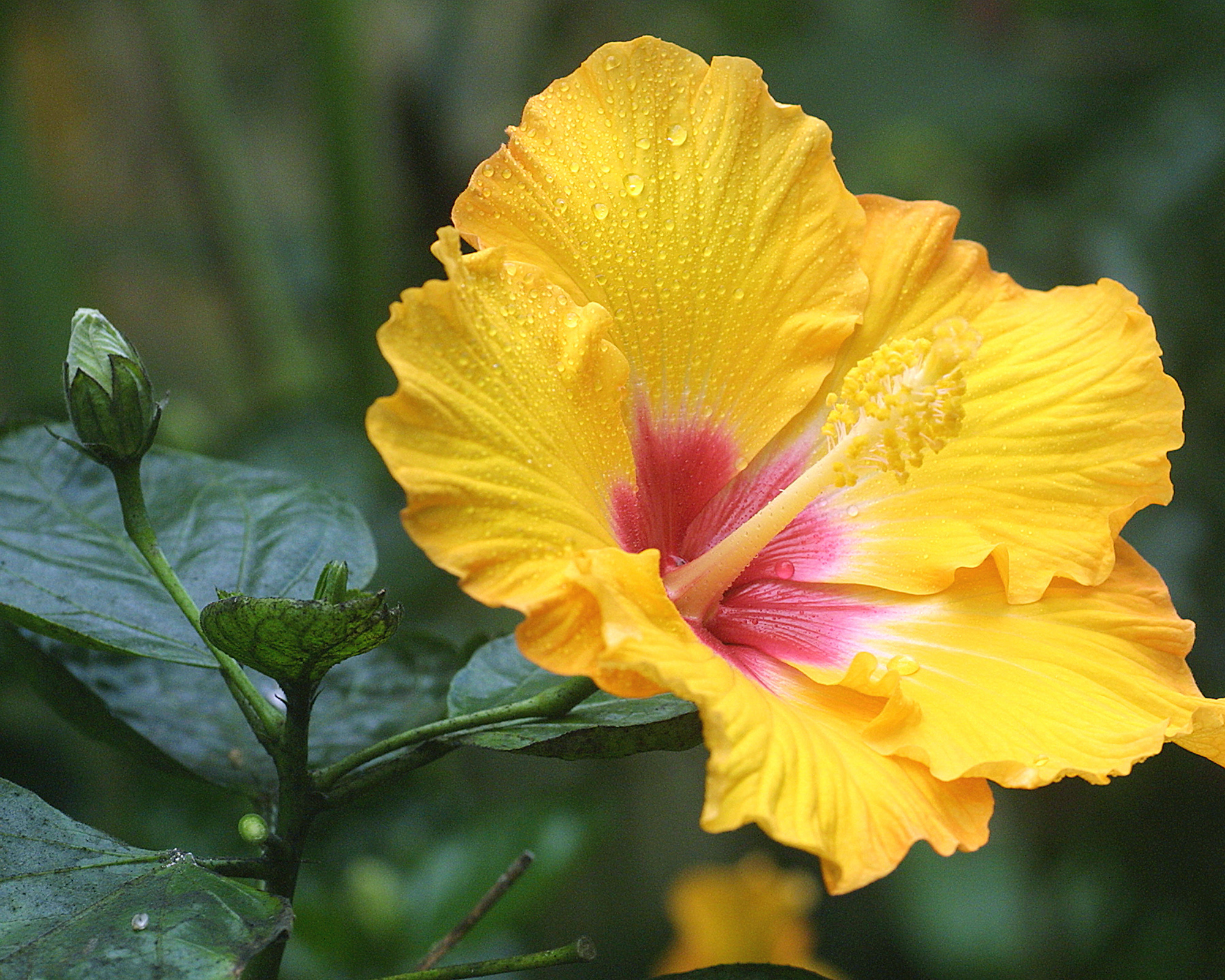
Add a splash of color to your indoor plant ideas in summer, when this pretty plant’s large trumpet-shaped flowers open among the glossy green leaves. The blooms come in a wide range of colors, from white and yellow to red and pink, and while each one lasts just a couple of days, they are produced in succession over a long period.
Provide some shade in summer and keep the compost moist from spring to fall, but allow the top to dry out between waterings in winter. Mist regularly or stand the plant on a tray of damp pebbles to raise humidity levels, and feed with a balanced liquid fertilizer once a fortnight from spring to autumn.
This striking shrub can grow to about 6ft (2m) in height and spread once mature, but can be pruned back in spring to keep growth in check.
11. Donkey’s tail (Sedum morganianum)
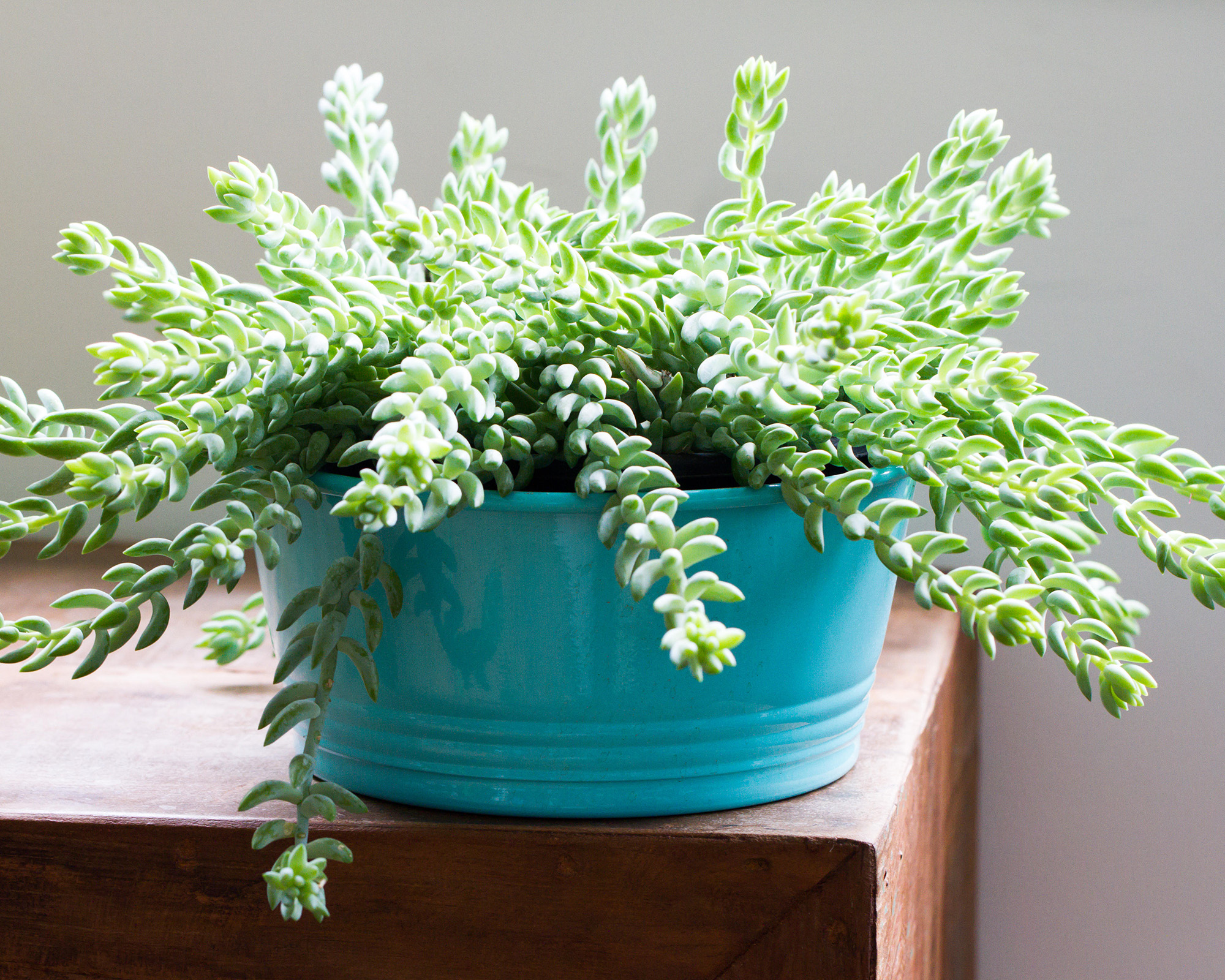
Hard to resist, the cute little donkey’s tail produces gently cascading stems of tiny fleshy pale green leaves that create an eye-catching textural effect. This diminutive succulent is the perfect small conservatory plant where you can hang it in a basket or set it on a shelf.
Provide some shade in summer to prevent leaf scorch and water when the top of the compost feels dry – reduce the frequency in winter so that it’s almost dry but the leaves are not shrivelled. Thriving on neglect, just guard against overwatering it. Feed with a half-strength balanced liquid fertilizer once every four to six weeks from spring to early fall.
This would also be a great option for if you're searching for the best plants for bedrooms to add some greenery to your sleeping space.
12. Echeveria
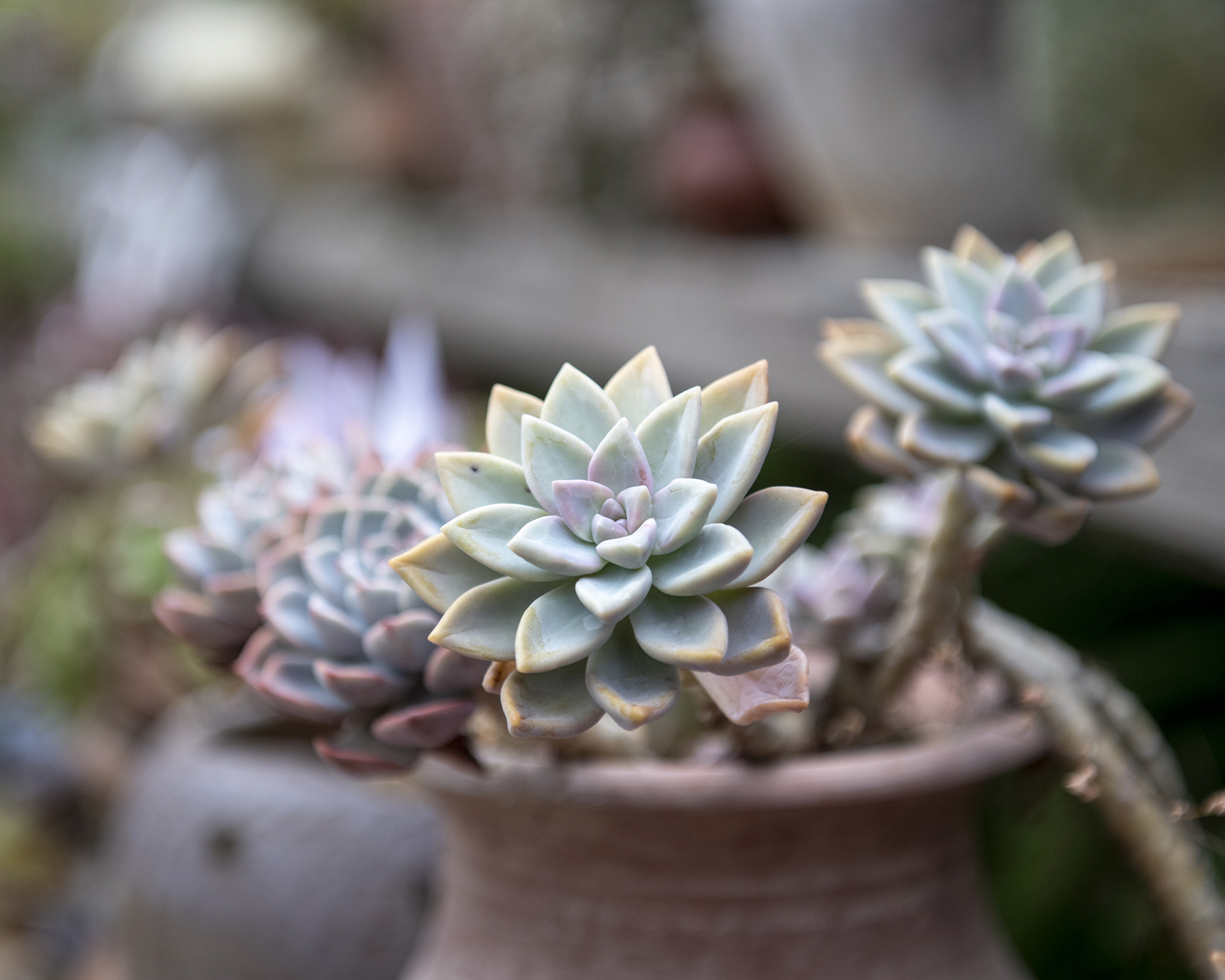
There are many different forms of echeveria, but all feature low-growing rosettes of fleshy leaves in choice of colors, including green, burgundy, mauve and purple. Tall stems of dainty lantern-shaped yellow, orange or red flowers appear in summer, shooting up between the leaves to create a theatrical effect.
While these little treasures like full sun, too much of it in summer can cause stress and discoloration, so provide some shade during this period. Water when the top of the compost feels dry and do not water plants at all in winter, unless the leaves start to shrivel. Beware of overwatering which may lead to fungal diseases and rotting. Apply a half-strength balanced liquid fertilizer two or three times from spring to early fall.
13. Lemon tree (Citrus limon)
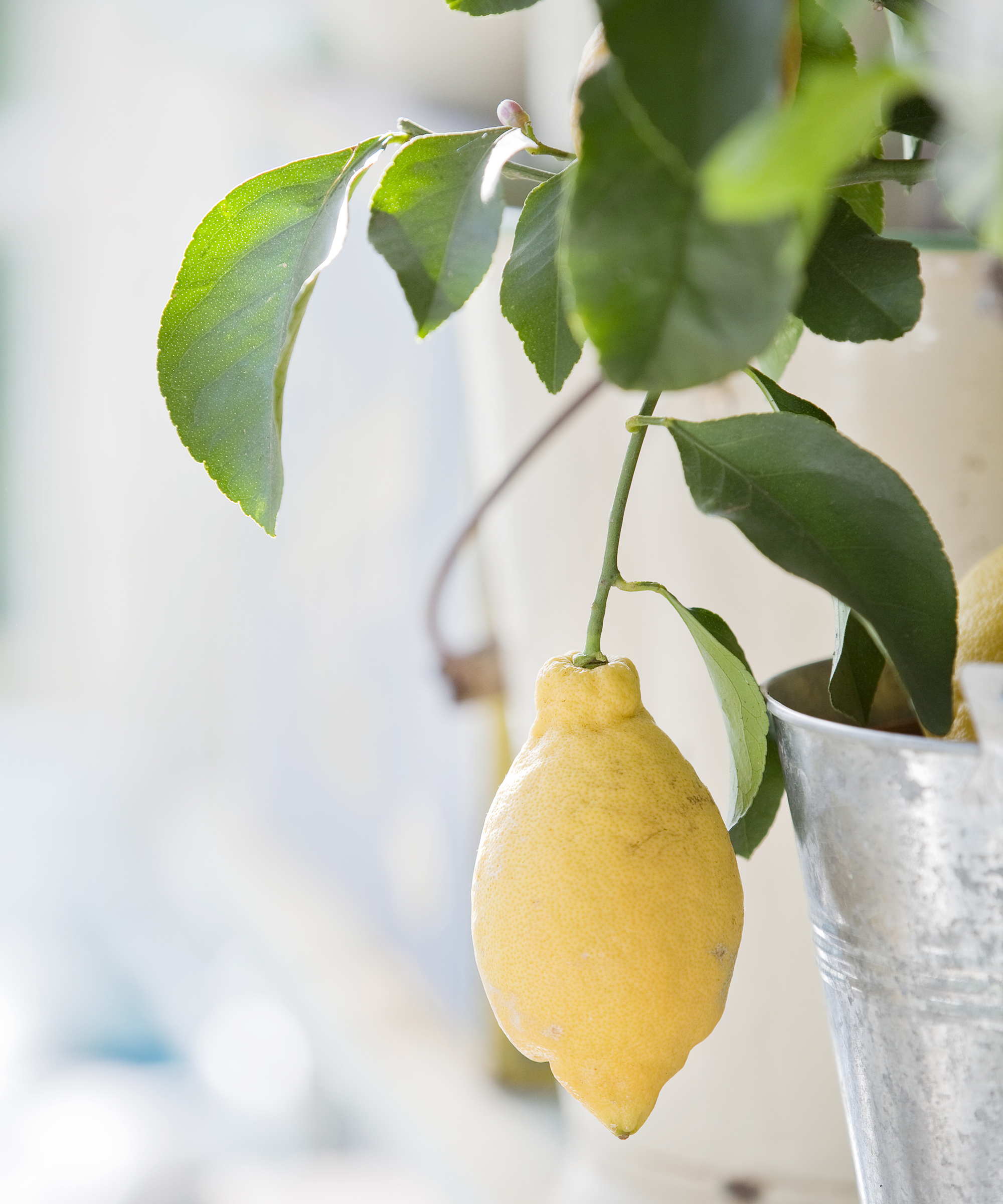
Citrus trees make some of the best indoor trees and they will thrive in a conservatory, where the heat from spring to early fall will help their fruits to form, while the cool but frost-free conditions (50-55˚F/10-13˚C is ideal) in winter allow the plant to rest.
As well as the fruits, your room will be filled with the delicious scent of their white blossom in spring and early summer – the fruit then takes almost a year to form and ripen. Not the easiest plants to care for, a lemon or orange tree will reward you only if you can offer them the conditions they enjoy.
When growing fruit trees in pots indoors, give plants some shade in the height of summer, and keep the compost moist from spring to fall, ideally watering with rainwater (leave tap water in a bucket for 24 hours to allow the chlorine to dissipate before applying it). In winter, only water when the top of the compost feels dry, and ensure that your plant never experiences waterlogging by planting it in a pot with drainage holes at the base.
Mist regularly to raise humidity levels, especially in early spring when the flowers are developing, which will aid fertilization and help to guarantee some lemons. Apply a specialist summer citrus fertilizer every two weeks from spring to fall, then switch to a winter citrus fertilizer and apply it every three or four weeks when you water the plant.
What plants can you grow in an unheated conservatory?
Many plants from desert and Mediterranean regions and areas that experience cool winters will be survive in an unheated conservatory, as long as the temperature doesn’t regularly plunge below 41-45˚F (5-7˚C).
Many cacti, echeverias, citrus plants such as kumquats, hoya, and bougainvillea will cope with low temperatures if their compost is kept dry. In fact, citrus plants rarely fare well in heated homes but will thrive in a cool but frost-free conservatory over winter, while some cacti and succulents are surprisingly hardy and adapted to freezing desert nights.
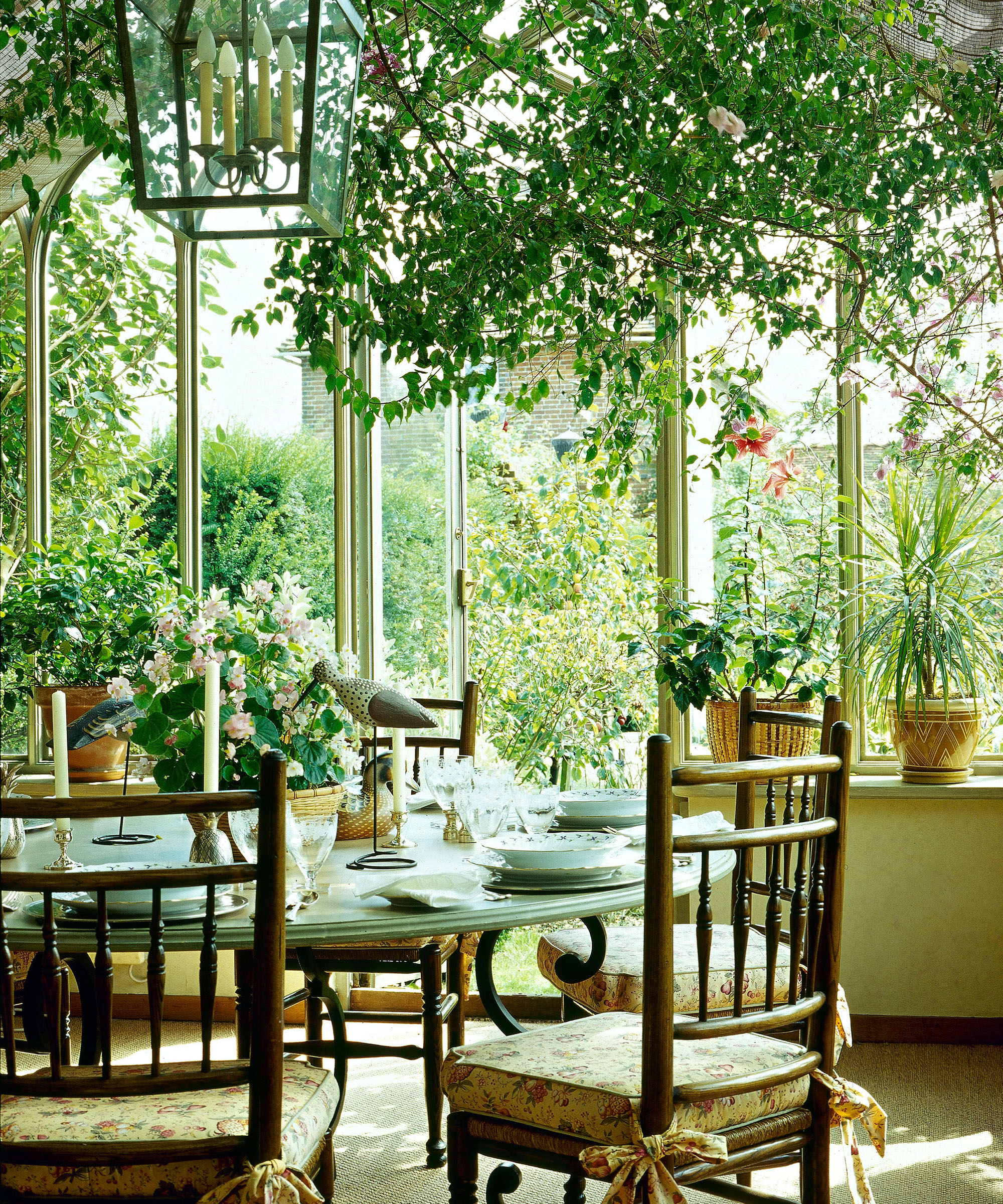
Can succulents survive in a conservatory?
Adapted to the bright sunlight and high temperatures in a conservatory, many succulents are also tolerant of the colder conditions in winter. Choose from aloes, echeverias, crassulas, and senecios, all of which are very easy to grow and ideal for beginners.
These plants do not like a humid atmosphere, however, so if you see condensation forming on the glass, open a window on dry days to keep the air flowing through your room, but remember to close it again at night when temperatures may plunge too low for them. You will also need to use a blind to shade succulents on sunny days from late spring to late summer to prevent leaf scorch.
Once your plants are thriving, propagating succulents is a great idea as it will give you extra houseplants for free.

How do you hang plants in a conservatory?
Placing your plants at different heights will create flowing layers of flowers and foliage, creating a jungle-like ambience in your conservatory or garden room. Trailing types are ideal for hanging basket ideas suspended from the ceiling or try them in pots set on tall plant stands or shelves.
To hang your plants, screw a sturdy hook into the beams of a wooden conservatory ceiling or fix a hanging basket bracket to a solid wall. If you have a steel construction, a high-strength magnetic hook attached to the ceiling beams will be strong enough to hold a planted basket.
For uPVC or aluminium frames, try suspending your plants on hooks attached to a tension rod. These are often used to hold up clothes in a wardrobe or to hang curtains and simply fit into the window frame, although they may not take as much weight as screwed-in hook so opt for lightweight containers to prevent accidents.

Zia Allaway is a garden book author, editor, and journalist, and writes for a range of gardening and women’s magazines, including Easy Gardens, Homes & Gardens and Livingetc, as well as The Guardian and The Daily Telegraph newspapers. She has also written books for the Royal Horticultural Society and Dorling Kindersley publishers, including Eco-Gardening, Compost, Low Maintenance, Practical House Plant Book, Practical Cactus & Succulent Book, Indoor Edible Garden, What Plant Where, and the Encyclopedia of Plants and Flowers.
